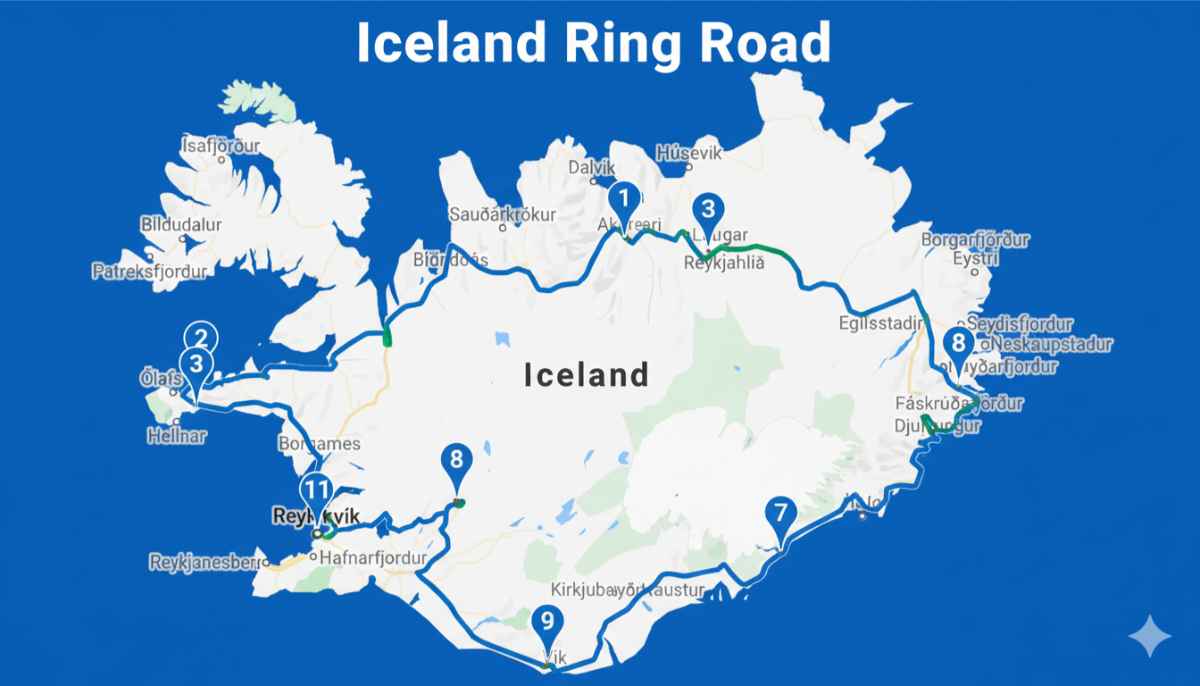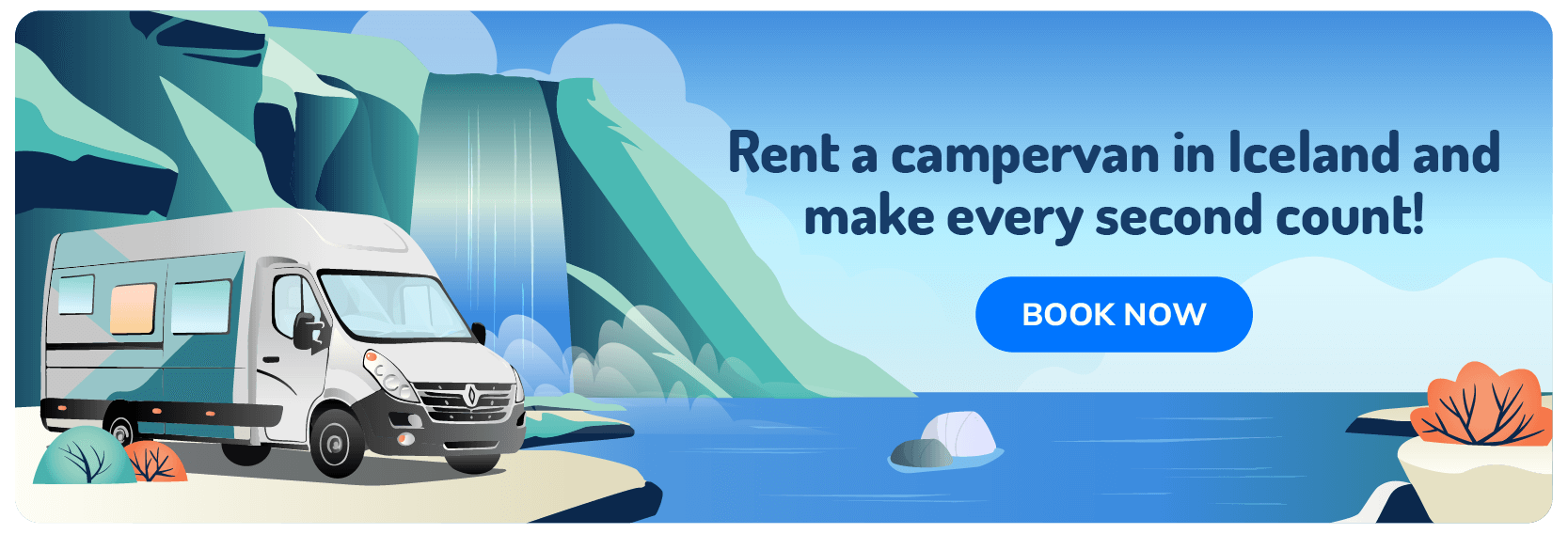The decision whether to drive the Ring Road or focus on just a few regions is only the beginning of your travel plans. If you’ve decided to drive the entire country, your next question is whether to do the Iceland Ring Road clockwise or counterclockwise. While there’s no true right or wrong answer, your travel style and preferences can play a significant role.
This guide will help you weigh your options and determine whether the Ring Road, clockwise or counterclockwise, best matches your vision of the perfect trip.
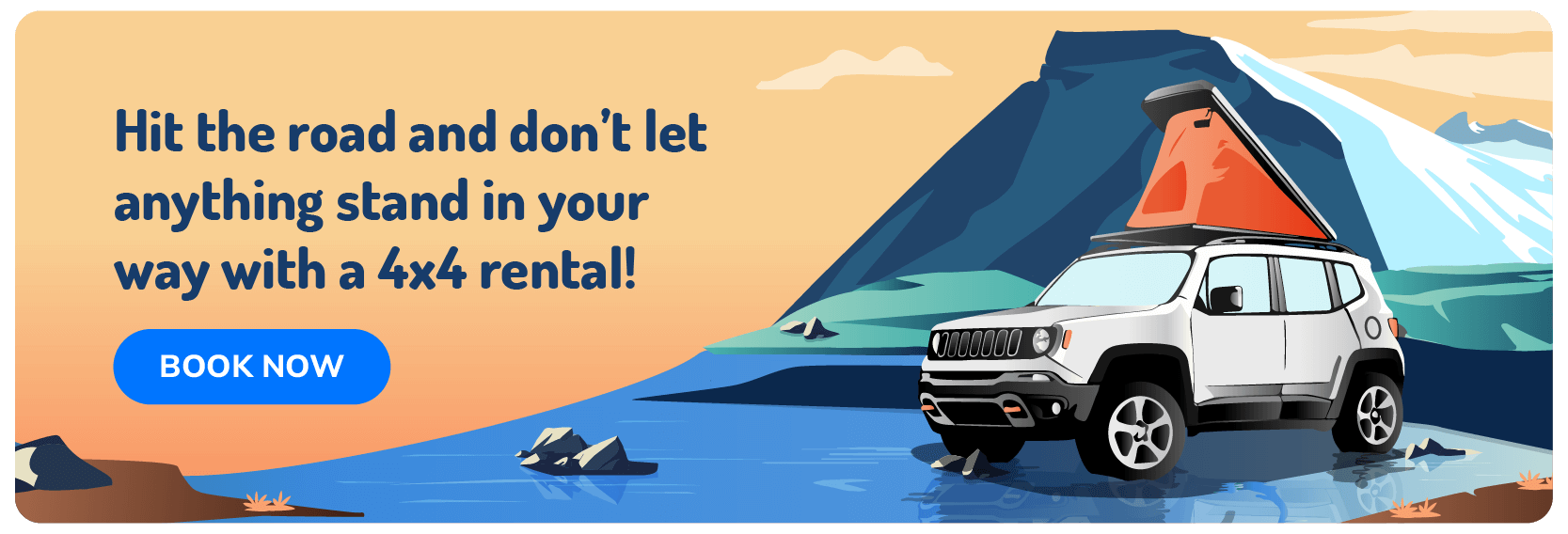
What Is the Ring Road and Why It’s Perfect for Camper Travel
The Ring Road is the primary road that encircles Iceland, making it easy to get to most parts of the country. Many visitors traverse the Ring Road annually, while others choose to visit just one or several regions instead. As you decide what your camper trip will look like, the following will help you determine if the Ring Road is the right choice.
Route 1 Overview: Length, Attractions, and Logistics
Route 1, otherwise called the Ring Road, covers a 1,322 km (821 miles) loop around Iceland. The fully paved road includes bridges, tunnels, mountain passes, and more, giving you a convenient route as you travel through the country. While there are plenty of routes to detour from the Ring Road, it’s the primary route.
As you drive around the Ring Road in your camper van, you can expect to encounter many of the country’s main attractions, from waterfalls to glaciers to canyons. Some of these sights may require a small detour, while others are situated close to the main road.
Because Route 1 is the main road, you will find gas stations and rest stops conveniently located along the way, allowing you to keep your vehicle and yourself fueled. You can also find hotels, guesthouses, and campgrounds. As always, flexibility is vital when you plan to drive the Ring Road, whether clockwise or counterclockwise.
Is a Full Loop Worth It or Should You Focus on One Region?
Is doing the full loop really worth it, or is it better to focus on one or a few regions instead? The answer to this question depends greatly on how much time you have and what time of year you will visit. For instance, a 10 to 14-day trip in summer gives you plenty of time to see a lot around the Ring Road. However, a 5-day trip any time of the year just isn’t enough.
Although the Ring Road itself can be driven in less than 24 hours of drive time, you will need time to stop at the sights and do some hiking. In general, if you have 10 days or more, a Ring Road itinerary is possible. In the winter months, you will need to allow more time for potential delays as weather and road closures are more likely to occur.
If you are interested in exploring more in-depth, focusing on one or several regions is a better choice, giving you more time to complete hikes and see more. Trips of a week or less also benefit from choosing one or several regions rather than driving the entire Ring Road. The less driving time on short trips, the better.
Factors to Consider Before Choosing a Direction
Once you decide to drive Route 1 with your camper van, the next choice you must make is whether to do Iceland’s Ring Road clockwise or counterclockwise. If you ask people who have done the route which way is best, you’ll likely get many different answers. The truth is, it doesn’t matter in the long run, but there are some factors that can make the decision easier.
Arrival Time, Weather, and Road Conditions
Your arrival time in Iceland doesn’t matter as much for the direction you choose to travel. However, it is important to determine when you start your Ring Road adventure. If you arrive on a red-eye flight from North America, it’s best to wait until the second day to start, while those arriving from Europe may feel comfortable getting started right away.
Another important factor in choosing to drive Iceland’s Ring Road clockwise or counterclockwise is the weather. Since a camper van doesn’t require booking campgrounds ahead of time, you can look at the weather forecast on your arrival to choose a direction. If the weather is better in the North, go clockwise. If the South looks nicer, go counterclockwise. Camping gives you this flexibility.
Likewise, check the road conditions map to see if there are any road closures to worry about, especially in the winter. Current and expected road closures due to the weather forecast can guide you toward the best direction for your Ring Road trip.
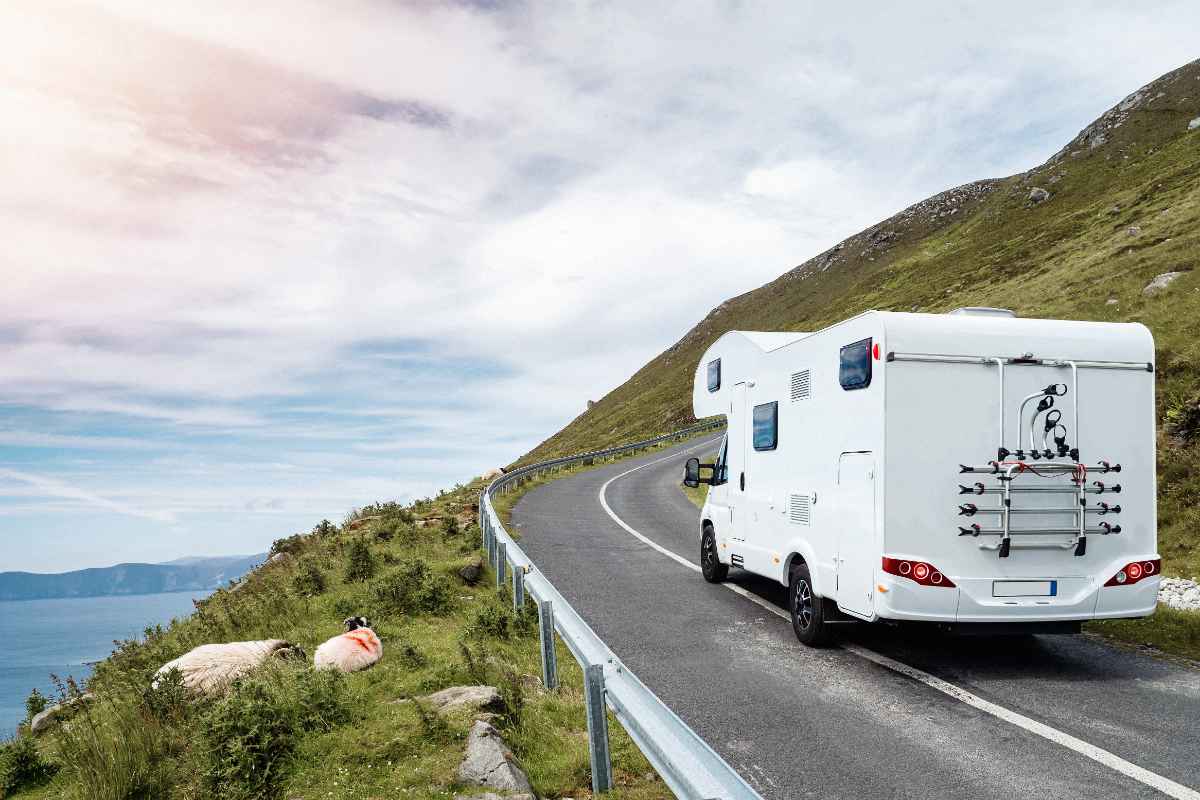
Campsite Availability and Services for Campers
In the summer months, all the campgrounds in Iceland are open and ready for visitors. However, during the shoulder seasons and winter, only specific campgrounds are open. Before you start your journey, check tjalda.is for which campgrounds are open while you are visiting. If you’re arriving around the time campgrounds begin to open or close, you can plan your route accordingly.
Traffic and Crowds: What to Expect
During the summer, you will most likely encounter more traffic in the Reykjavík area and along the South Coast and Golden Circle, because this is where most tourists visit. The east, north, and Westfjords generally have less traffic and crowds, even in the summer. As you get into the shoulder seasons of spring or fall, you will start to see lower numbers of visitors, making the Ring Road less busy.
As you plan your Ring Road route, driving counterclockwise allows you to deal with more traffic and bigger crowds early in your trip. Others prefer to start slower with less traffic and work their way toward the busier south. It all depends on your personal preference. In the winter, you are less likely to experience traffic or crowds, regardless of the direction you choose.
Driving Clockwise: Pros and Cons
First, we’ll take a closer look at the pros and cons of driving the Ring Road clockwise. Following this route means driving through the west and north first before driving down the east coast and along the South Coast back to the airport. Here’s what you should know about going clockwise.
Early Access to North and East Iceland
When you start the Ring Road clockwise, you will pass through the western part of Iceland and start your journey with the sights in the north. This is a good option if winter is approaching, as winter weather starts in the north and east first. The earlier in your trip you access the north and east, the less likely you will be to be delayed due to weather.
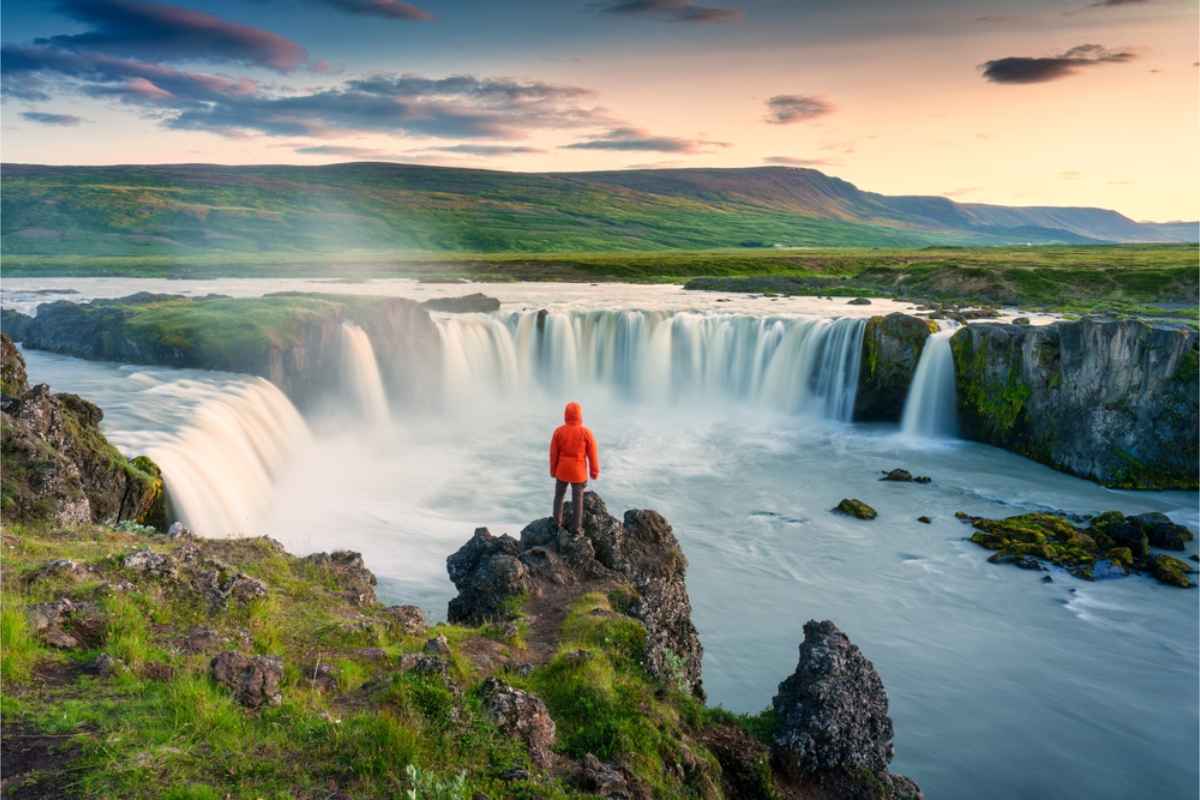
Visiting Remote Areas First, Ending with the South Coast
The north and east are generally more remote and have lesser-known attractions that can give you a peaceful start to your journey. However, you will end your trip in the busier South Coast. While some people don’t mind this change, others prefer to visit the busier places first and continue to the quieter locations.
Best For: Off-the-Beaten-Path Travelers and Summer Trips
Who benefits most from going clockwise around the Ring Road? If you’re more interested in visiting off-the-beaten-path locations, clockwise gives you faster access to these less popular destinations. You can spend more time exploring in the north and east and finish your trip with a quick run through the busier South Coast locations.
The clockwise direction is also ideal for summer trips when there are more tourists overall in the country. You will find fewer tourists visiting the north and east, while the south is generally filled with visitors. Going north first gives you a chance to familiarize yourself with the country without the high crowd levels of the south.
Driving Counterclockwise: Pros and Cons
Next, we’ll take a look at the pros and cons of driving counterclockwise. Driving the Ring Road in this direction finishes the busier South Coast sights first and finishes your trip at a slower pace. Here’s what you should know about this option:
Starting with the Golden Circle and South Coast
If you start your trip with the more popular Golden Circle and South Coast, you can look forward to a slower pace and fewer crowds for the last half of your journey. Some people feel disappointed when they experience a less crowded Iceland and then finish their trip with the more popular destinations.
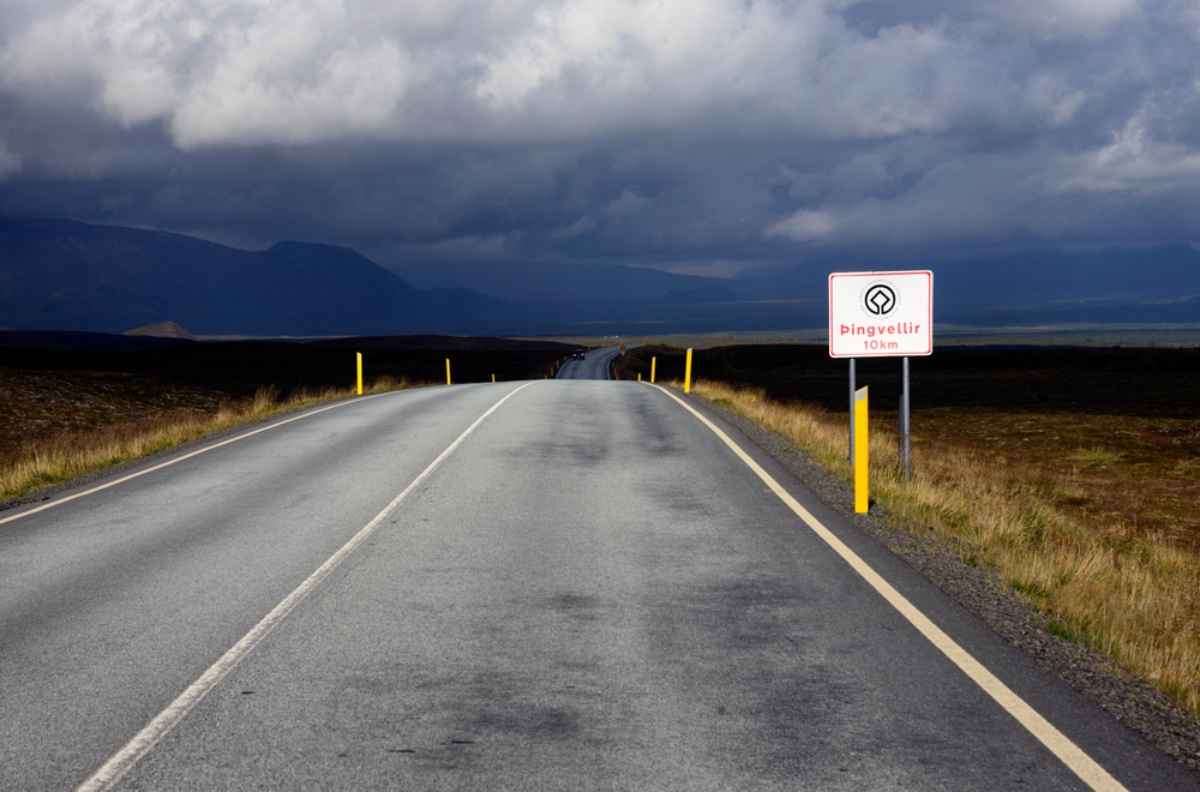
Gradually Transitioning to Quieter Regions
As you continue driving east along the southern route, you will start to see crowds reduce the further you get. Many visitors don’t get past Vík, while others won’t drive past Jökulsárlón. This gradual transition to quieter reasons can give your trip a more relaxed feel and allow you to slow down and enjoy things at your own pace later in your trip.
Best For: First-Time Visitors and Shorter Trips
A clockwise itinerary is often best for first-time visitors because it allows you to see the most popular parts of Iceland first. These areas are usually the parts that make many visitors choose Iceland as a destination. It’s also best for shorter trips because you can see what you want on the South Coast and then plan the rest of your itinerary according to how much time you have left.
Seasonal Advice for Camper Road Trips
While visitors must always plan according to the season and weather in Iceland, it’s especially important for those who are traveling in a camper van. These vans are more susceptible to high winds and, therefore, you must know how to prepare for the different seasons.
Summer vs. Winter Travel Considerations
The summer is one of the easiest times to travel through Iceland in a camper van, but it isn’t the only option. During the summer, you will have nearly 24 hours of daylight for longer sightseeing. Hikes and campgrounds are also more accessible this time of year. However, places will be more crowded and prices are often higher. Booking early can help combat the higher costs.
On the other hand, camping in winter is also possible with proper planning. You will need to make note of which campgrounds are open year-round and plan your days around those areas. The best part of visiting in the winter is the lower crowds and reduced costs for everything from campervans to campsites. You also get a chance to see the northern lights.
If you choose to camp in the shoulder months or winter, keep a close eye on the weather and road conditions and adjust your plans accordingly. A Ring Road trip is possible all year long, but you need to be flexible. If there is a weather warning or road closures, you must be ready to stay put for a day or so before continuing your journey. Be sure to include extra time in your plans.
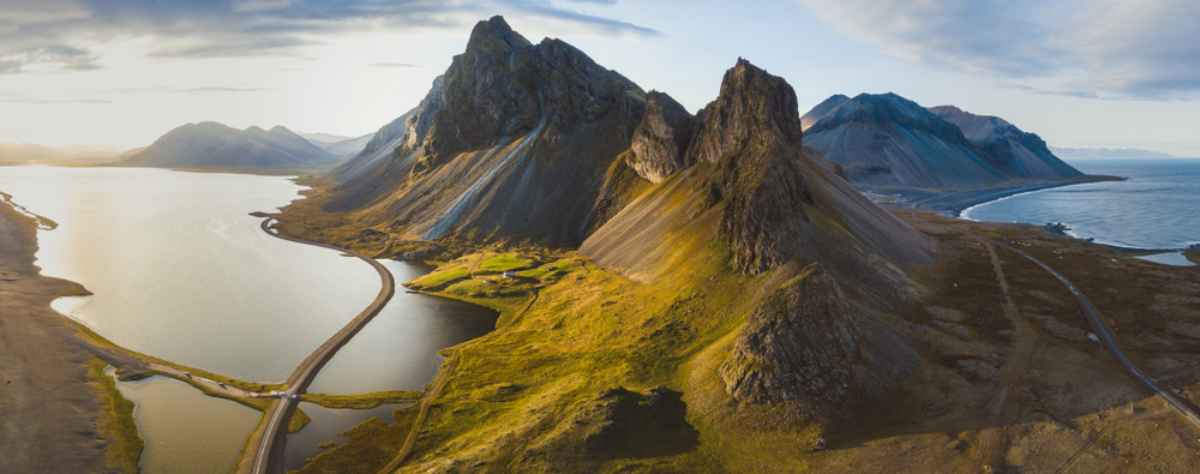
Daylight Hours and Their Impact on Driving Direction
The amount of daylight hours between the longest day and the shortest is significant, especially when you compare the south to the north. In summer, you can expect nearly 24 hours of daylight, more so in the north. However, in winter, there are only about four hours of daylight, more in the south. Therefore, you should include this factor in your driving direction plans.
With longer daylight hours, the direction matters less. However, if you are traveling in the shoulder seasons or winter, you might want to follow the longer daylight hours. For instance, as daylight shortens, cover the north first. However, when daylight is lengthening in January into spring, visit the south first, so the days are longer in the north.
Clockwise or Counterclockwise: What’s Best for You?
Should you drive the Iceland Ring Road clockwise or counterclockwise? The answer depends on what you expect from your trip and what best fits your requirements. There truly is no right or wrong answer to this question.
Clockwise:
- Expect to see the busier sights first, but keep in mind you will be going the same direction as most tour buses.
- You will cover most of Iceland’s highlights at the beginning of your trip.
- The more remote locations and less popular spots are covered at the end of your trip.
- You can get a feel for the country while having full access to gas stations, campsites, and everything you need. These things can be more scarce in the north and east.
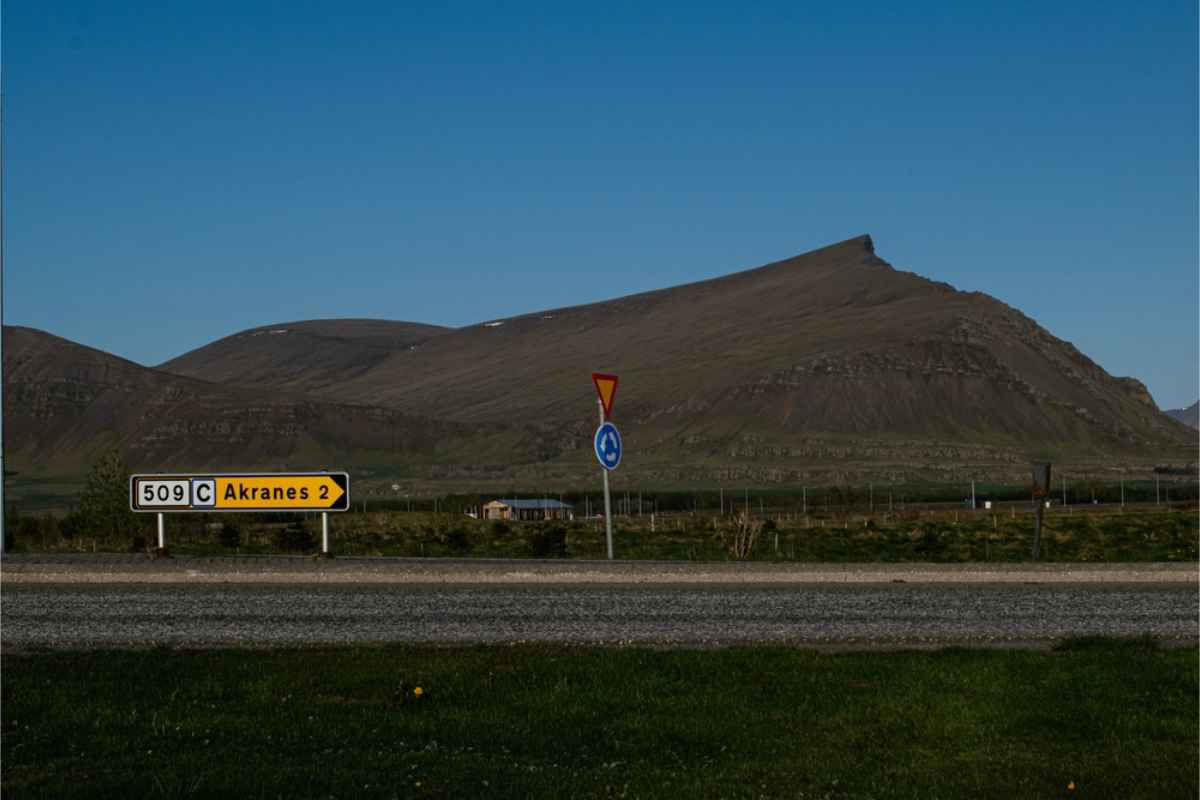
Counterclockwise:
- Spend as much time as you wish enjoying the more remote locations before driving through the busier South Coast.
- The South Coast serves as the grand finale for your trip.
- If you’re traveling in the autumn, you will get through the north and east before winter weather sets in.
- You have to wait longer to see the highlights that likely attracted you to Iceland in the first place.
In the end, which direction is best for you depends on how much time you have, what you hope to see, which time of year you travel, and other factors. All in all, it’s a personal decision.
Final Tips for Ring Road Campervan Trips
Once you decide to drive the Ring Road in your camper van and the direction you would like to go, you can start the rest of your itinerary planning. Follow these tips to ensure a seamless process for your trip.
Fuel Stops, Groceries, and Supplies
Fuel stops are relatively frequent around the Ring Road, except in a few more remote areas of the route. However, it’s best to keep your vehicle full as often as possible. The general rule of thumb is to fill up when your tank is about half full. This will help you avoid running out of fuel.
Groceries and other supplies have a similar requirement. You will find grocery stores in the city and most major towns around the Ring Road. However, smaller towns may only have convenience stores, which can be more expensive. Be sure to stock up whenever you see a grocery store to avoid spending too much on food and supplies.
Suggested Camper Itineraries for Both Directions
The following are suggested itineraries in both directions to get you started. The more days you have, the more you can expand the itinerary.
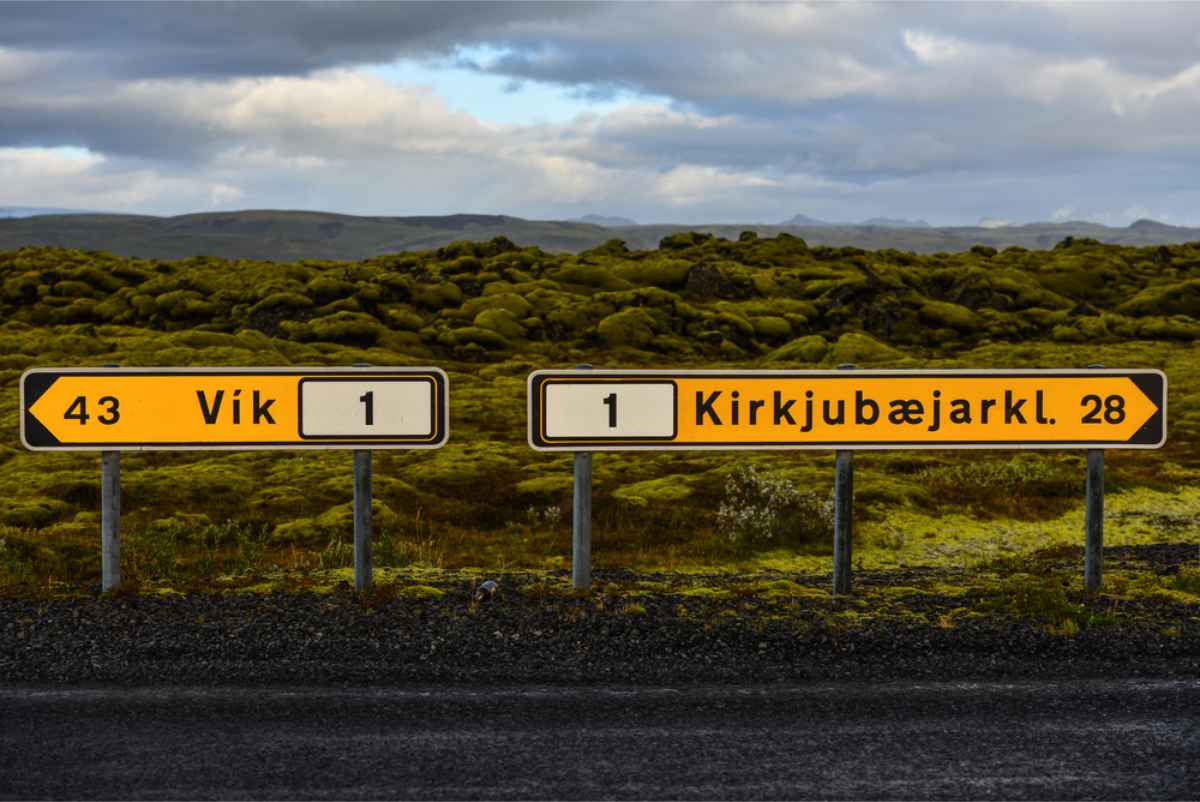
Counterclockwise:
- Reykjavík to Vík: Stop at Seljalandsfoss, Skógafoss, Dyrhólaey, and Reynisfjara Beach. Spend the night at the Vík or Kirkjubæjarklaustur campground.
- Vík to Höfn: Include stops like Fjaðrárgljúfur canyon, Skaftafell, Jökulsárlón Glacier Lagoon, and Diamond Beach, and camp at the Höfn campsite.
- Höfn to Egilsstaðir: Stop in Djúpivogur and Breiðdalsvík and enjoy the mountain passes and waterfalls in the east. Spend the night at the Egilsstaðir campsite.
- Egilsstaðir to Mývatn: Make stops at Dettifoss, Hverir geothermal area, and Mývatn hot springs. Stay in the Reykjahlíð campsite near Mývatn.
- Mývatn to Akureyri: Stop at Goðafoss waterfall, check out the town of Akureyri, and consider whale watching in Húsavík. Stay at the Akureyri campsite.
- Akureyri to Borgarfjörður: Spend time at Hraunfossar, Barnafoss, and Grábrók crater. Stay in the campground in Borgarnes.
- Borgarfjörður to Reykjavík: Hike to Glymur waterfall, explore Reykjavík, and relax in Blue Lagoon or Sky Lagoon. Stay in the Reykjavík campsite.
Clockwise:
- Reykjavík to Borgarfjörður / Akureyri: Stop at Hraunfossar, Barnafoss, and Grábrók crater on the way. Stay in the Akureyri campsite or one nearby.
- Akureyri to Mývatn: Explore at Goðafoss, Mývatn geothermal area, and Hverfjall crater. Spend the night in the Reykjahlíð campsite.
- Mývatn to Egilsstaðir: Stop at Dettifoss and Selfoss waterfalls and enjoy the eastern highlands. Spend the night at the Egilsstaðir campsite.
- Egilsstaðir to Höfn: Drive to Seyðisfjörður and enjoy other tiny fishing villages and the coastal cliffs along the way. Use the Höfn campsite for your stay.
- Höfn to Vík: Stop at sights like Jökulsárlón Glacier Lagoon, Diamond Beach, Skaftafell, and Fjaðrárgljúfur canyon before staying the night at the Vík campsite.
- Vík to Reykjavík: See the South Coast highlights along the way, including Reynisfjara Beach, Dyrhólaey, Skógafoss, and Seljalandsfoss. Settle into the Reykjavík campsite or find one near the Golden Circle.
- Golden Circle to Reykjavík: Complete the Golden Circle (Þingvellir, Geysir, and Gullfoss) and stay the night in Reykjavík.
Conclusion: Choose Your Direction with Confidence
Now that you’re aware of the pros and cons of traveling the Iceland Ring Road clockwise or counterclockwise, you can think about what you want from your trip to help you confidently make the right decision. No matter which way you choose, you’re bound to have the adventure of a lifetime when you rent a camper van in Iceland.
